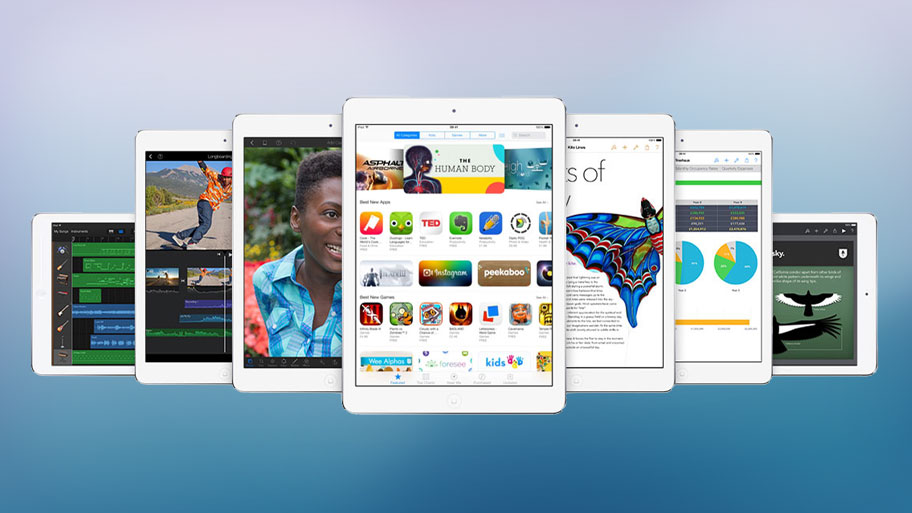TechRadar Verdict
Want the best tablet on the market? Then get the iPad Air. It's got a stunning design, powerful innards and a superb suite of apps. It's as near to tablet perfection as you're going to get.
Pros
- +
Sleek design
- +
Powerful innards
- +
Great suite of free apps
Cons
- -
No TouchID
- -
Camera features lacking
- -
16GB version is too small
Why you can trust TechRadar
The original iPad Air told us all we needed to know about Apple's changed approach to tablets – with a 43% thinner bezel and a 28% lighter body than the iPads that came before it, the Air champions the 'easier to live with' ideal.
Although the iPad Air's successor, the iPad Air 2, and its successor, the iPad Air 3, have now been out for a while it doesn't mean the original iPad Air isn't worth considering if you're after a tablet, especially since the price has dropped now that there's a newer Air on the block.
The original iPad Air took many of its design cues from the iPad mini 2. It's got the same smooth back design, thinner bezel and more attractive speakers at the bottom of the slate for more of a family likeness with the cut-down tablet from Apple's stables.
While the Air is a clear copy of that smaller device I'm not going to hold it against Apple, as the mini already had a stunning design, and the Air takes that design ethos and brings it to the big leagues. It's a design Apple stuck with for the iPad Air 2, for the most part, so it must be good.
It also has machined buttons that don't feel loose if you shake the device, adding to the premium feel.
On top of the improved design the Air also got Apple's A7 chip, bringing with it 64-bit processing power and heaps of battery-saving features to keep your tablet going even longer in day-to-day use. That's also been superseded, by the A8X chip in the Air 2 and the A9X in the iPad Pro, but you still get a decent slug of power here.
And the greatest thing about the iPad range in my eyes is the price – Apple originally started the 16GB Wi-Fi-only model at the same cost as its rivals, and while that outlay does spiral up as capacity and connectivity increase, for an Apple device to not charge an (unnecessary) premium is something I'm really happy to see.
Sign up for breaking news, reviews, opinion, top tech deals, and more.
Even better, since the arrival of the iPad Air 2 prices for the original iPad Air have fallen.
You're looking at a price range of £319 - £459 ($399 - $579 or AU$499 - AU$709), going from the 16GB version (Wi-Fi only) to the 32GB cellular option.
Apple has discontinued the 64GB version of the iPad Air, so if you're after a larger-capacity slate you'll want to invest in the iPad Air 2.
You could also scour the internet for a second-hand iPad Air 64GB model. With the launch of the iPad Air 2 many people have put their perfectly good original iPad Airs up for sale, so with a bit of careful shopping you could net yourself a bargain.
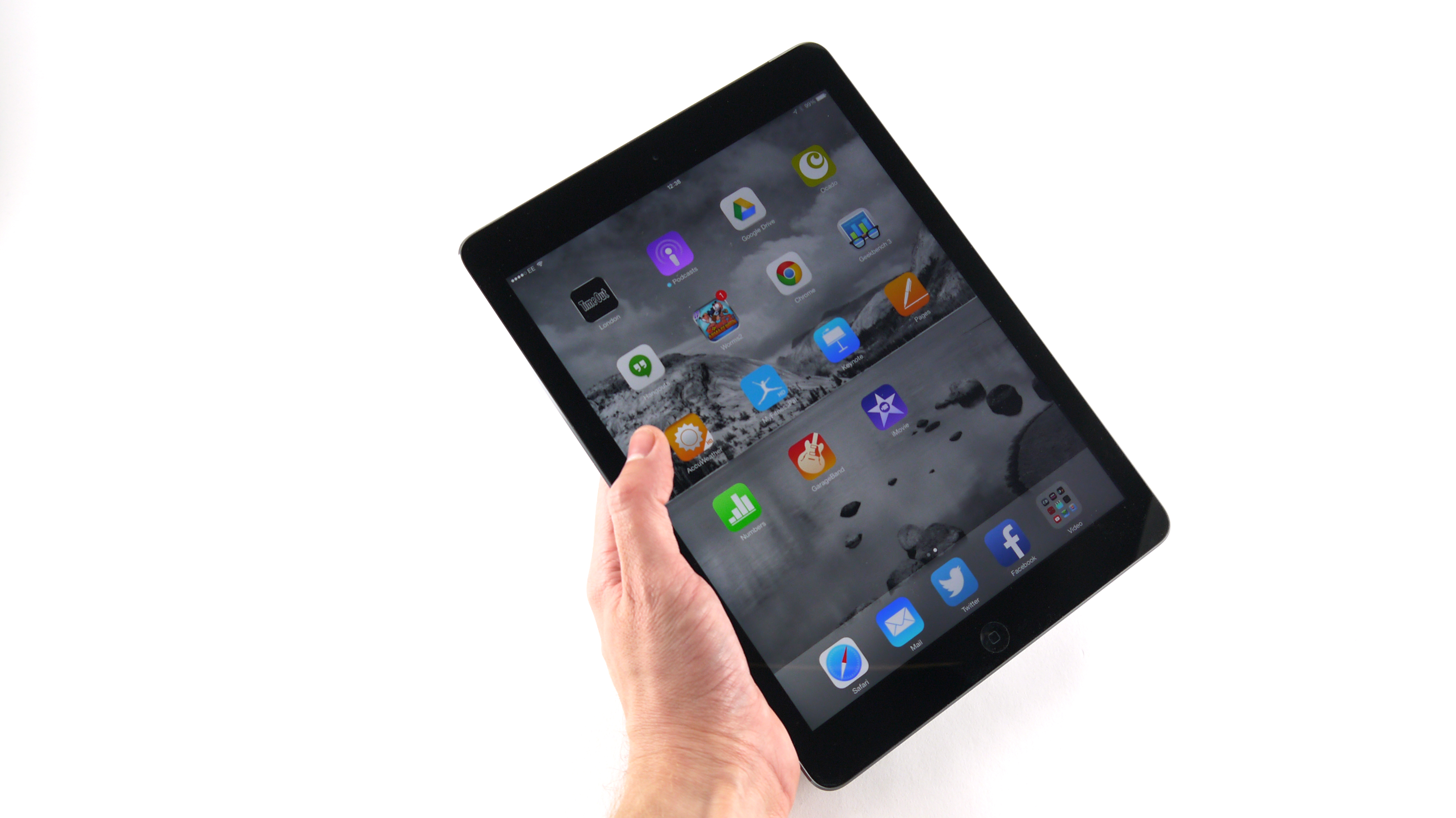
Apple has lobbed in a lot of useful free software, as well as bringing a more refined experience with iOS 8 and now iOS 9, and you can see that it's put a lot of effort into making the iPad Air a tablet that's still relevant in the market, even if it's now getting on a bit in tablet terms.
On that latter point, if you're thinking about buying the iPad Air right now it would be remiss of us not to point out that the iPad Air 2 offers a number of enhancements over this model.
What's more, the iPad Air 3 could be right around the corner if reports are to be believed, which would likely see the iPad Air dropped from the range altogether, with the iPad Air 2 slotting in as the entry-level 10-incher.
It may not seem particularly future-proof from a certain perspective, then, but I'd wager that the iPad Air will remain a solid, and well-supported, runner throughout 2016 and beyond.
The keynote for the launch of the iPad Air talked a lot about Apple's dominance in terms of tablet usage, but since then a large number of users are starting to warm to the idea of an Android model as their main device.
Samsung is currently the big name in Android, with its Galaxy Tab S line offering an improved screen and better ergonomics for those preferring the Android experience in a tablet. Google's Nexus 9 is another to have impressed with its performance and UI.
- Want the best of Android in a tablet? Try our Samsung Galaxy Tab S review!
![iPad Air review]](https://cdn.mos.cms.futurecdn.net/4265bc8fc5cdd5a574f1953c14168f95.jpg)
It's worth noting that the 16GB option of the iPad Air is nigh-on useless as a purchase if you're thinking of pulling in all the free apps Apple is slinging your way; this was an issue when the Retina display landed on the iPad 3, and has only got worse as more HD apps from developers have been slipped onto the App Store.
The fact that the original iPad Air now only comes in 16GB and 32GB configurations may make you reconsider your purchase if you're looking at storing a large number of photos, music, videos and apps.
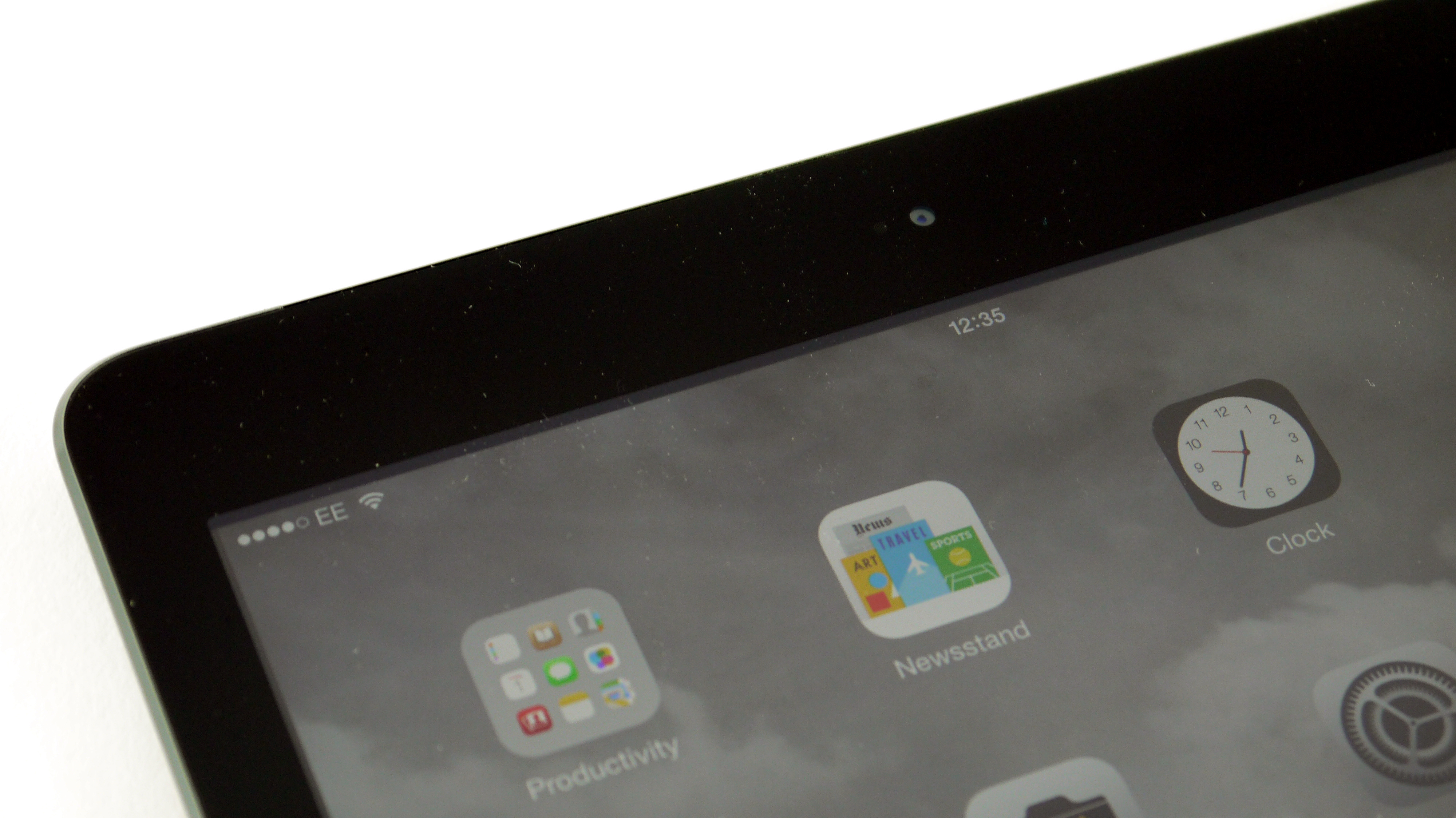
Even so, the iPad Air remains a tempting purchase on paper – but how does it perform in the hand when subjected to rigorous daily use?
Design
The iPad Air is an odd device when you pick it up for the first time. When you hear all the numbers being bandied about you'd understandably assume that you'd experience something that was almost ghost-like in the hand, a tablet that could almost get blown away.
And I'm absolutely not disputing that – the iPad Air remains one of the most balanced tablets on the market even now, with great precision going into the engineering throughout.
However, if you've touched an iPad mini (pick a number, any number), or just haven't held an older iPad for a while (and, going by the reaction of some people we tested with, even some that had) you won't feel as much of a difference as you might be expecting.
It's only with the significantly slimmer iPad Air 2 that a tangible gap between the feel of the old and tablets was really established, even though it was the iPad Air that really carried the look of Apple's full-sized tablet range to the next level.
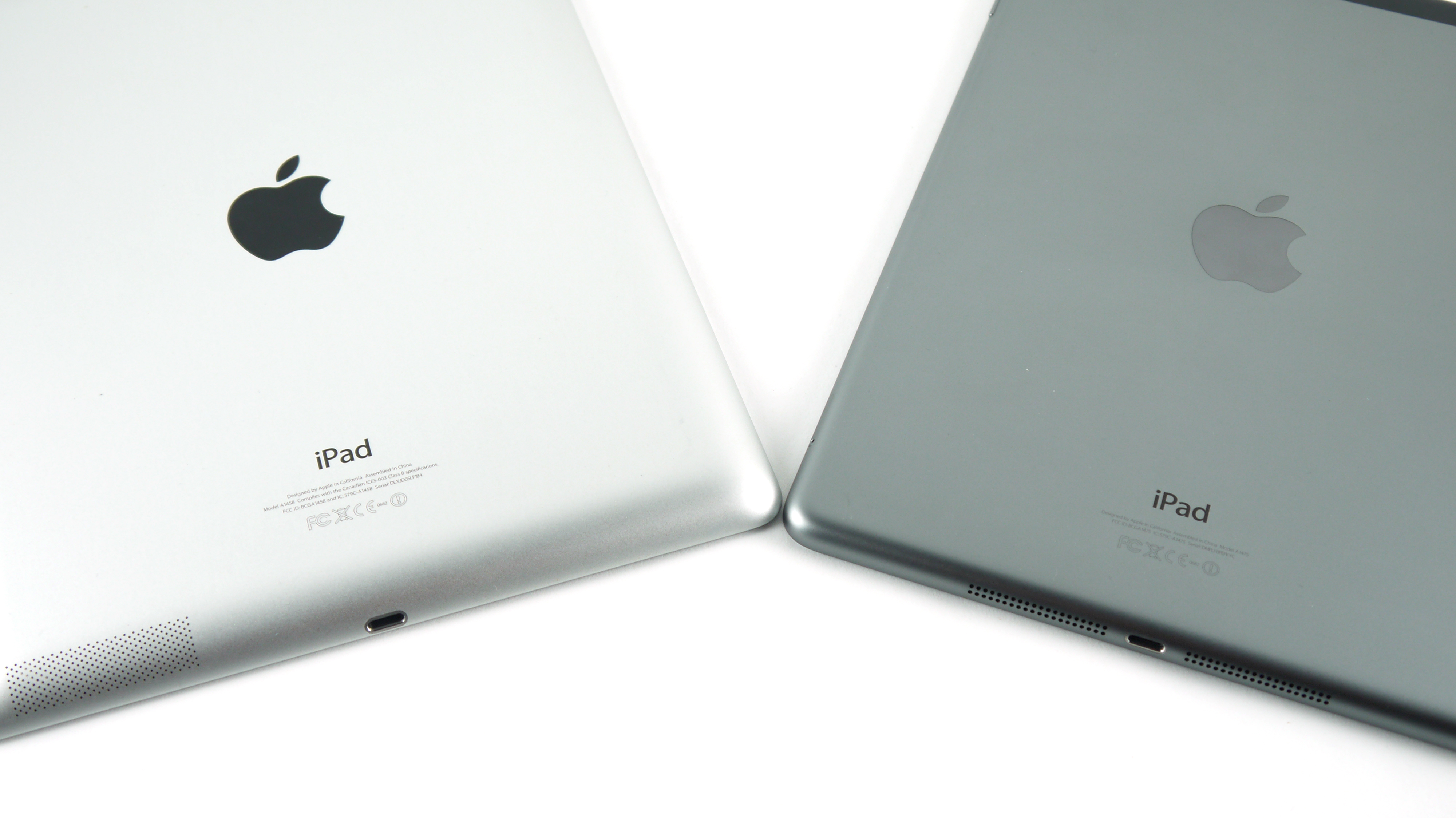
The design of the iPad Air is, as I've mentioned, very impressive. Yes, it's totally based on the iPad mini, and the smooth aluminium back is really great to feel in the hand. It's a shame that most people feel the need to slap a cover on an iPad as soon as it's bought – while I get the notion of protection, it hides away some cracking design.
That said, at least it keeps the fingers away from the chassis, and the iPad Air is a real magnet for prints. The back cover isn't too bad, but the mirrored Apple logo sucks down finger oil and is loathe to give it up, even after hard scrubbing with a cloth.
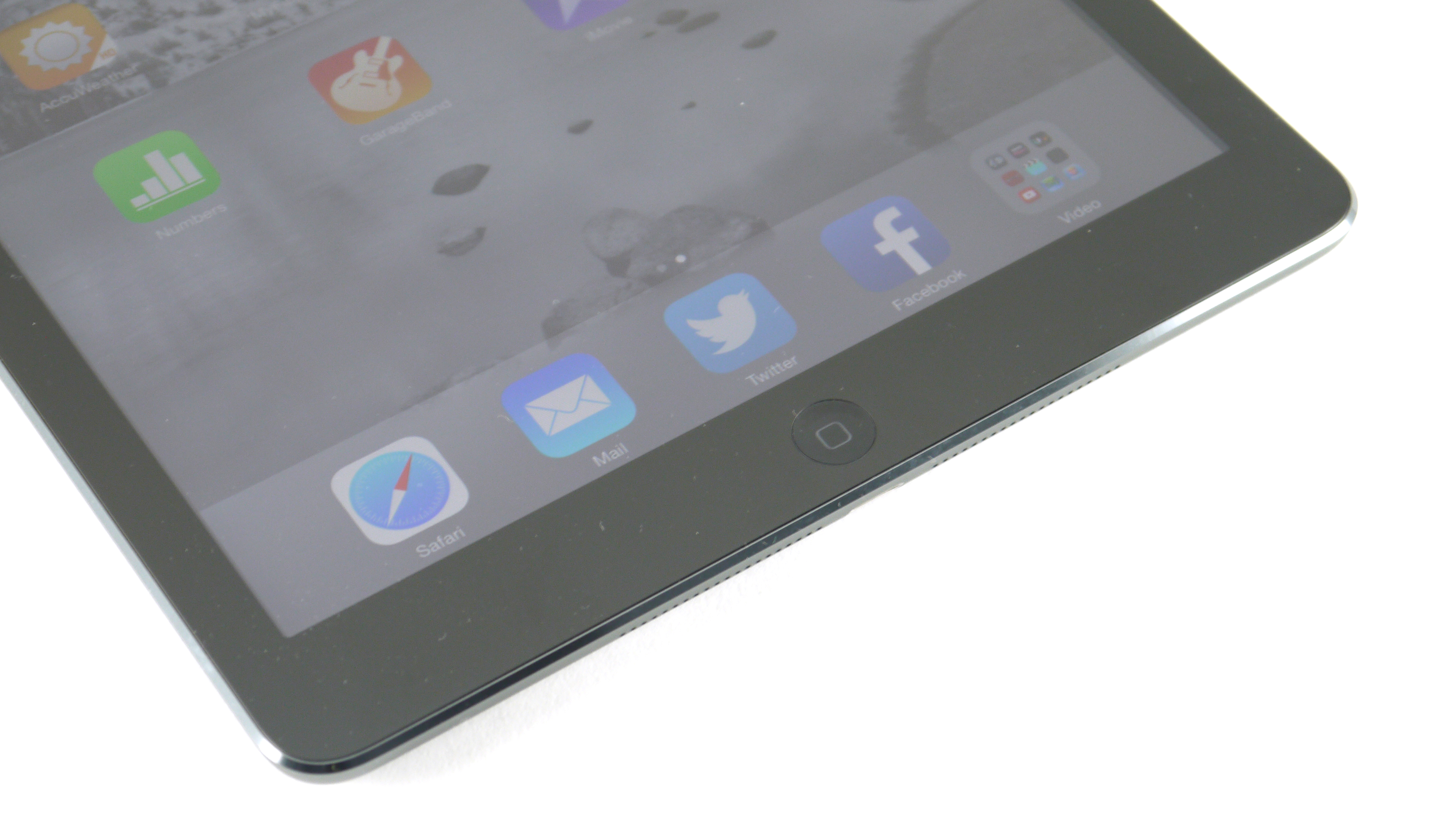
It might not sound like a big deal, but it makes your premium tablet look a little unkempt right from the start.
In actual operation, though, the design of the iPad Air complements the impressive innards superbly. It's unsurprisingly not possible to wrap your hand all the way around the edges of the Air, but then again it's sufficiently light (and comes with the ability to disregard stray thumbs encroaching on the screen, again like the iPad mini) to not make a big difference.
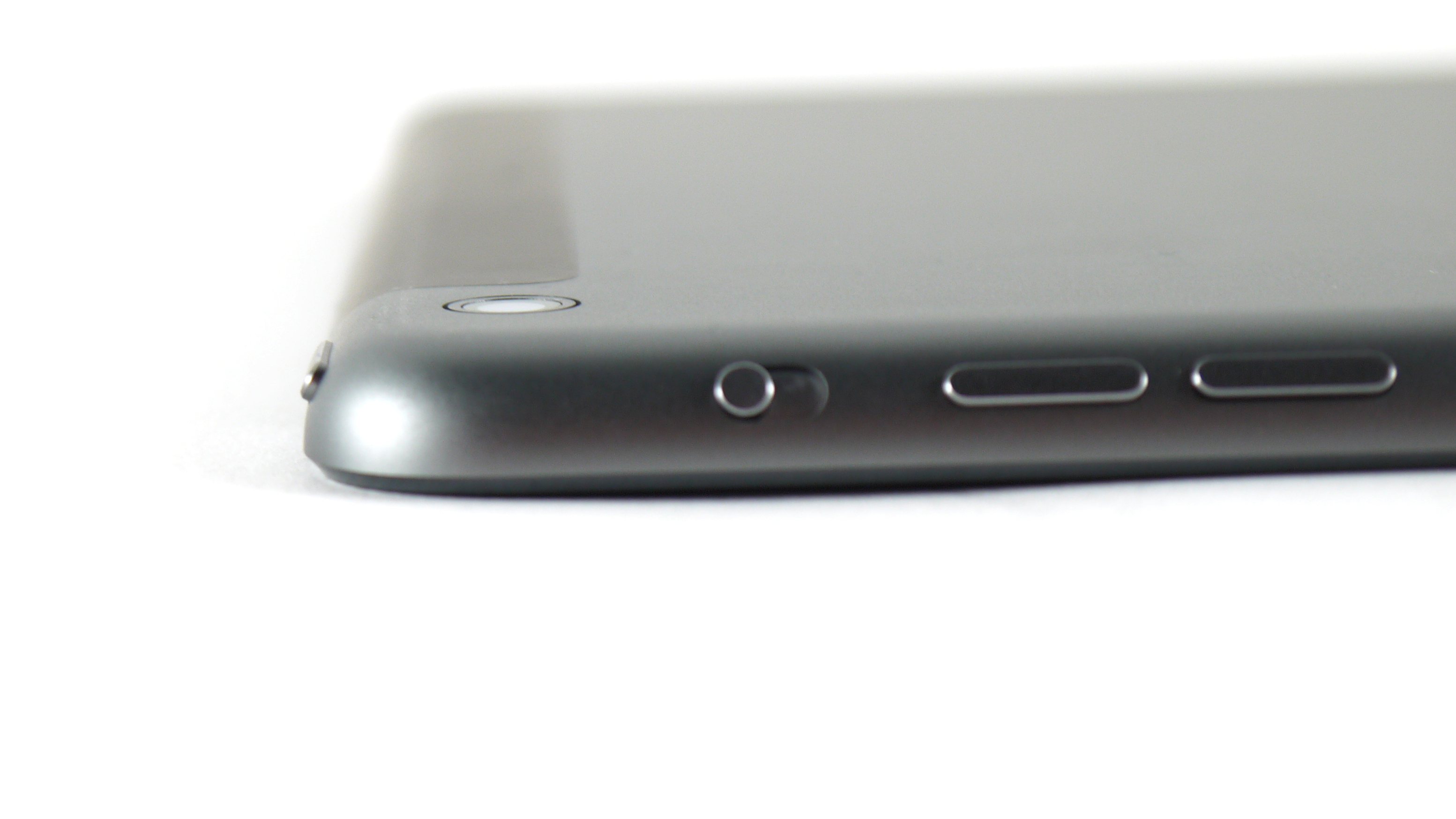
The rest of the buttonry – the top-mounted power key and the silencing rocker switch and volume buttons at the side – haven't moved far, but protrude nicely to make them very easy to hit no matter where you're holding the device. Such user-friendliness is often sacrificed in the quest to make tablets look sleeker, so I'm happy Apple has gone the other way here.
Having since switched to the iPad Air 2, I can also say that I miss the original Air's slider switch for either muting or locking the screen's orientation. Yes, you can achieve the same functions using Control Center, but there's nothing like a good dedicated button, is there?
I do have one note of criticism in terms of design for such a premium (and still expensive for its age) piece of kit: the screen has a plastic thud to it when tapped, on account of the smaller and lighter innards.
It's most noticeable when grazed with a fingernail – although with the addition of a case the effect is lessened – and I'm surprised Apple let this go. It may be that, in making the design thinner and removing part of the inner cage the overall strength of the chassis is somewhat reduced; but then the iPad Air 2 doesn't share the same problem, and it's significantly more svelte.
It's not a major issue by any means, and certainly one that you'll only pick up on sporadically, but it's still enough to irk at times when you're expecting a truly premium experience.
Many of you will also be wondering why there's no Touch ID onboard the iPad Air when it was such a big selling point for the iPhone 5S, which launched a month or so before it.
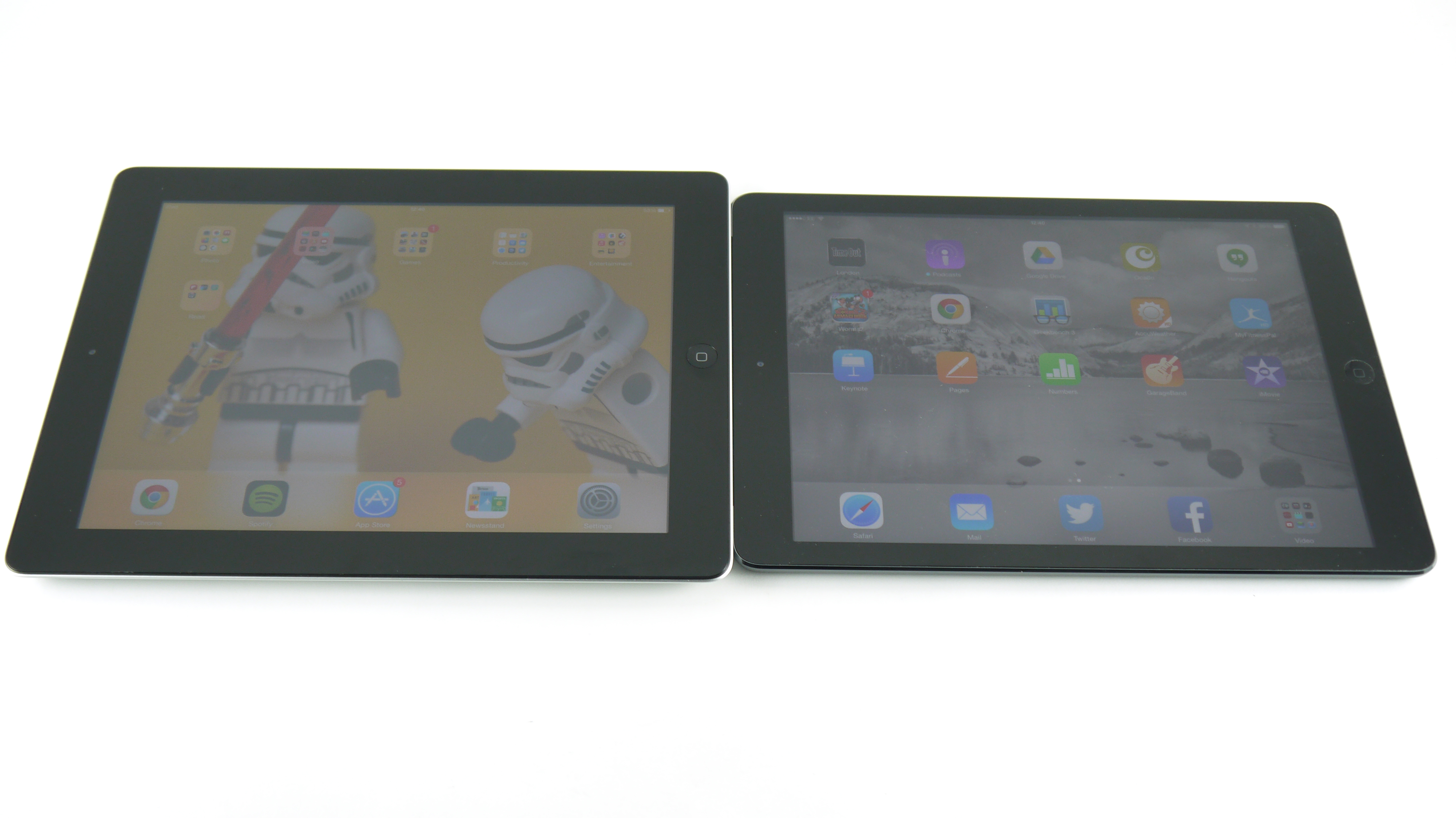
We're in the same boat. The architecture is there. It surely can't be an issue of space, seeing as the technology fitted into the iPhone 5S.
Turns out Apple held it back as one of the 'big upgrades' for the iPad Air 2, which certainly raised a few eyebrows. Still, in my experience with the iPad Air 2 I don't tend to use it much anyway – certainly nowhere near as much as I do on the iPhone 6S. It's not a massively galling omission on the iPad Air, then.

Gareth has been part of the consumer technology world in a career spanning three decades. He started life as a staff writer on the fledgling TechRadar, and has grew with the site (primarily as phones, tablets and wearables editor) until becoming Global Editor in Chief in 2018. Gareth has written over 4,000 articles for TechRadar, has contributed expert insight to a number of other publications, chaired panels on zeitgeist technologies, presented at the Gadget Show Live as well as representing the brand on TV and radio for multiple channels including Sky, BBC, ITV and Al-Jazeera. Passionate about fitness, he can bore anyone rigid about stress management, sleep tracking, heart rate variance as well as bemoaning something about the latest iPhone, Galaxy or OLED TV.
